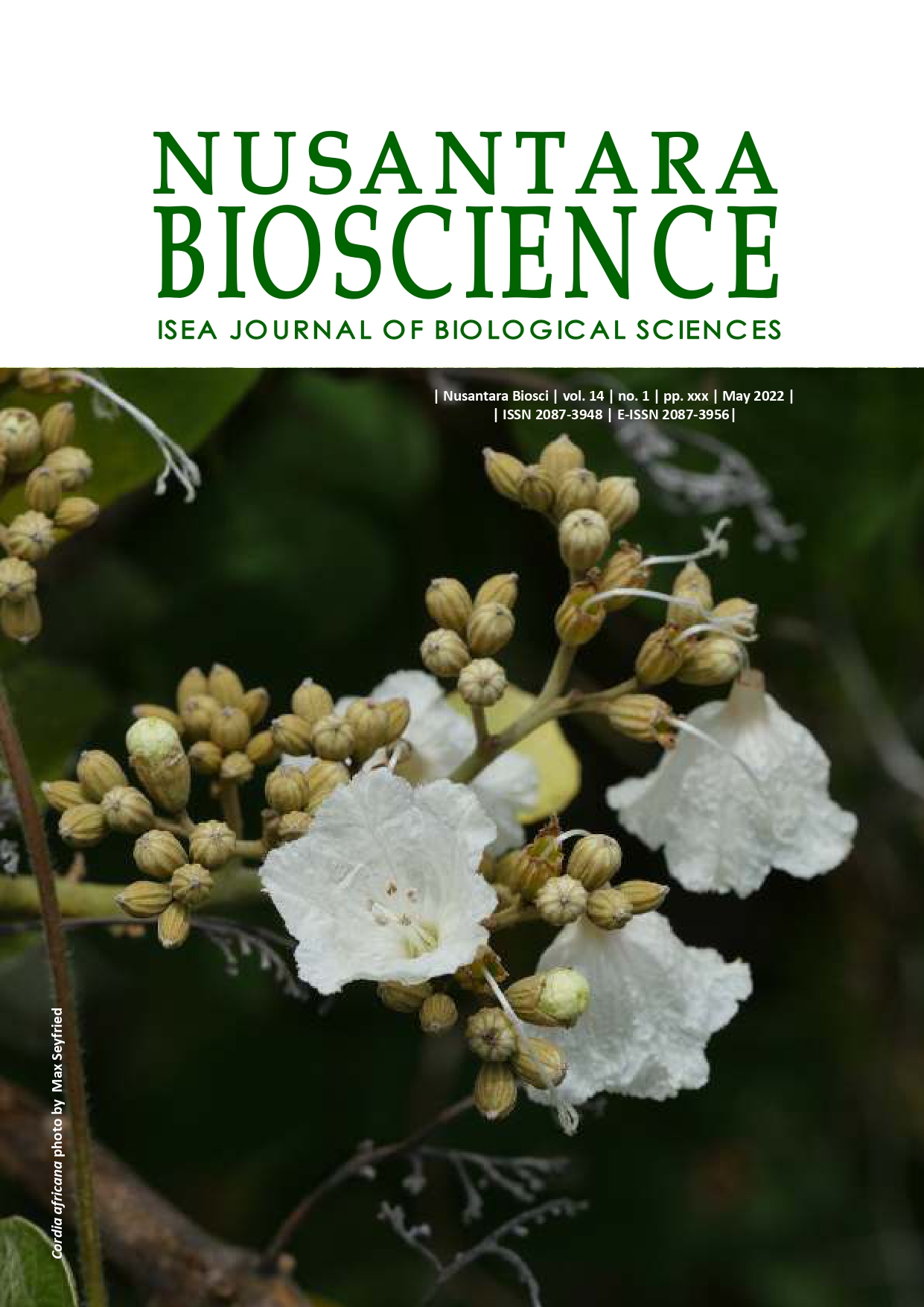Diversity of arbuscular mycorrhizal fungi and root colonization in Polygonatum verticillatum
##plugins.themes.bootstrap3.article.main##
Abstract
Abstract. Kumar A, Tapwal A. 2022. Diversity of arbuscular mycorrhizal fungi and root colonization in Polygonatum verticillatum. Nusantara Bioscience 14: 53-63. Diversity of arbuscular mycorrhizal fungi (AMF) associated with Polygonatum verticillatum (L.) All. was investigated in two sites of Himachal Himalaya, India. A total of 15 AMF species were isolated and identified from the rhizosphere soil of P. verticillatum. The spore density was 1.48 ± 1.91 and 3.99 ± 3.78 per 20 grams of rhizosphere soil at the site I and site II, respectively. Mycorrhizal colonization in the roots of P. verticillatum was recorded at 46.12 and 52.23 percent at the site I and site II, respectively. In addition, the mycorrhizal structures like darkly stained endophytic hyphae, coiled intracellular hyphae, Y-shaped hyphae, and 'H' connection (Arum type) were recorded.
2019-01-01

